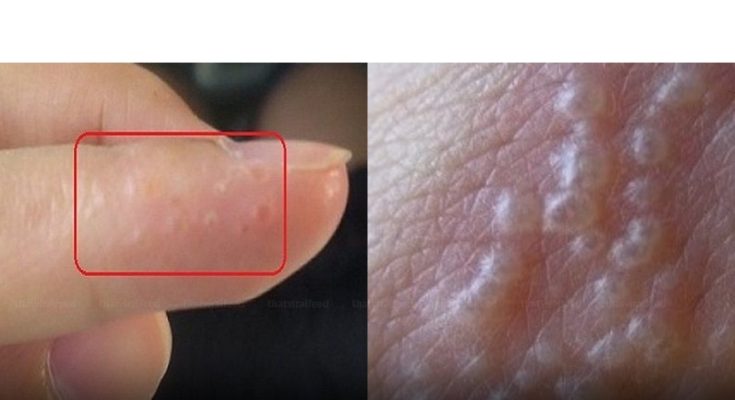
What is Dyshidrotic Eczema?
Dyshidrotic eczema is a common type of eczema that causes small, intensely itchy blisters to appear along the edges of the fingers, toes, palms, and soles of the feet. Because it’s linked to seasonal allergies, these blisters often show up in the spring. The blisters can be painful and might take weeks to heal.

If you’re unfamiliar with this type of eczema, don’t worry—it goes by a few other names, including:

-
- Pedopompholyx (affecting the feet)
-
- Cheiropompholyx (affecting the hands)
-
- Vesicular palmoplantar eczema
-
- Dyshidrosis
-
- Foot-and-hand eczema
-
- Dyshidrotic dermatitis
-
- Vesicular eczema
-
- Pompholyx
Symptoms of Dyshidrotic Eczema

- Deep-set blisters on the hands and feet, particularly along the edges of the fingers, toes, palms, and soles.
- Intense itching
- Redness
- Flaky skin
- Scaly or cracked skin
- Pain

How to Treat Dyshidrotic Eczema on Hands
Though dyshidrotic eczema isn’t curable, it can often be managed with the right treatment. While there is no guaranteed way to prevent flare-ups entirely, maintaining a good skincare routine can help strengthen your skin and reduce inflammation.

Conventional Treatment
Many mild cases of dyshidrotic eczema can be handled with natural treatments that are gentle on the body. However, more severe cases may require stronger solutions, like a prescription cream or ointment (such as corticosteroids), or even injections or pills.
- UV light therapy
- Draining large blisters
- Antihistamines
- Anti-itch creams
- Immune-suppressing ointments like Protopic or Elidel
Natural Treatments for Eczema
For those who prefer a more natural approach, keeping your skin clean and well-moisturized is essential. The type of treatment you use and how often you apply it will depend on your symptoms, but this at-home, natural approach can give you confidence in the products you’re using on your skin.

Soaking the affected area and applying cold compresses for 15 minutes at a time can help reduce inflammation. For best results, repeat this two to four times a day, following each session with a good moisturizer to lock in the benefits. (Check out the short video above for a quick guide on using cold compresses to ease eczema pain.)
Aloe vera is widely known for its soothing effects on irritated skin and its ability to speed up healing. To use it, break off a piece of the plant and apply the gel directly to the inflamed area. If you don’t have access to the plant, you can buy natural aloe vera lotion at your local pharmacy.

Oatmeal
Oatmeal is a go-to remedy for many skin conditions thanks to its anti-inflammatory properties. Applying oatmeal directly to the irritated skin can help reduce eczema symptoms and leave your skin feeling more comfortable.

The Bottom Line
When dealing with eczema, understanding which type you have is crucial for finding the right treatment. You deserve to enjoy the summer sun without the discomfort or embarrassment caused by eczema flare-ups. The more you learn about what’s happening in your body, the better equipped you’ll be to manage your symptoms and get back to enjoying the sunshine.



